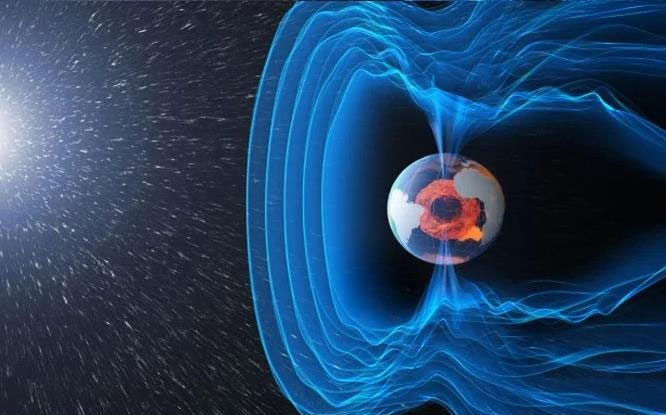The Earth’s protective magnetic field has undergone unusual changes over the past two centuries, which could affect the planet’s geomagnetic reversal status.
Throughout the past decade, clear evidence of the movement of the magnetic North Pole—actually drifting closer to the Siberian coast of Russia rather than remaining in Canada as it did previously—has raised concerns that the planet’s magnetic poles may soon switch places.
In recent years, a magnetic field weakness known as the South Atlantic Anomaly has continued to emerge, heightening warnings of an impending “reversal.”

Earth and its invisible magnetic shield – (Graphic image from ESA)
This situation is concerning because even though our planet has reversed its magnetic poles many times in the past, a current event of this nature could disrupt navigation systems and telecommunications, leading to humanity and other species facing a period of increased exposure to cosmic radiation.
As the magnetic field weakens during a reversal, it serves as the Earth’s protective layer against harmful radiation.
However, researchers from Lund University in Sweden and Oregon State University in the United States do not believe that such a catastrophe will occur anytime soon. They conducted a modeling investigation of the planet’s magnetic field in the recent past and discovered that some of the alarming factors may soon dissipate.
“Based on similarities with the reproduced anomalies, we predict that the South Atlantic Anomaly may disappear within the next 300 years and that the Earth is not heading towards a magnetic pole reversal” – stated Andreas Nilsson, the lead author of the study, as reported by Science Alert.
This magnetic pole reversal is certain to occur, and has happened hundreds of times throughout the planet’s history, but it will not happen at least within our generation and several generations to come.
It has occurred more frequently in the past, but researchers note that unlike in the past, the Earth’s magnetic field is no longer as vigorous, so “rebellious” phenomena may not occur as often.
The instances of the Earth’s magnetic pole reversals are recorded in ancient magnetic data from rock formations, as when the magnetic poles change, the tiny magnetic crystals also shift accordingly. The crystals in clay are similarly affected, allowing researchers to study magnetic field fluctuations using ancient ceramics.





















































